In the 1880s a French marquis, Antoine Amédée Marie Vincent Manca de Vallambrosa fetched up in western North Dakota with a scheme to introduce a better and more profitable way of processing beef and shipping it to eastern markets.
It didn't work out.
His lasting legacy was the town of Medora, named after his wife, Medora von Hoffman de Vallambrosa, that he founded in a fit of pique against the existing settlement of Little Missouri. The locals had not accepted him or his schemes so he decided to strike out on his own. His time overlapped with that of Theodore Roosevelt, who owned a ranch in the area. De Morès and Roosevelt had a cordial, if occasionally strained, relationship.
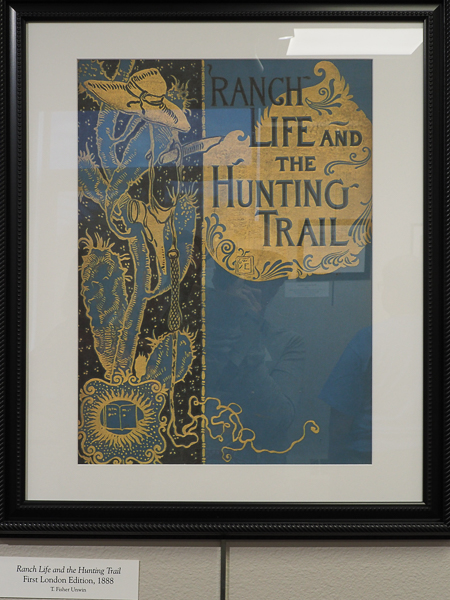
But first....
Between the Enchanted Highway and Medora we stopped at the Theodore Roosevelt Center at Dickinson State University. The Center is a repository for all things TR with a particular goal of digitizing any and all written material for, by, and about him.
It is a major undertaking to say the least!
The only picture is this display of TR's book Ranch Life and the Hunting Trail, the first London edition of 1888. I had read it some time ago and enjoyed it very much. The contradiction that someone could be so committed both to preserving our natural resources and shooting them puzzled me then and now.
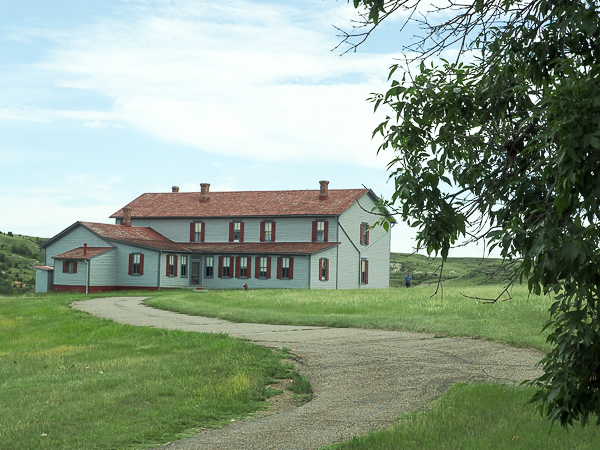
It's not the typical image of a French chateau, but it is the genuine article, North Dakota style.
Our tour started in the Visitors' Center, where we saw a video about the family and the area, and the adjacent museum, where there were a number of exhibits, but the chateau was the heart of the tour.
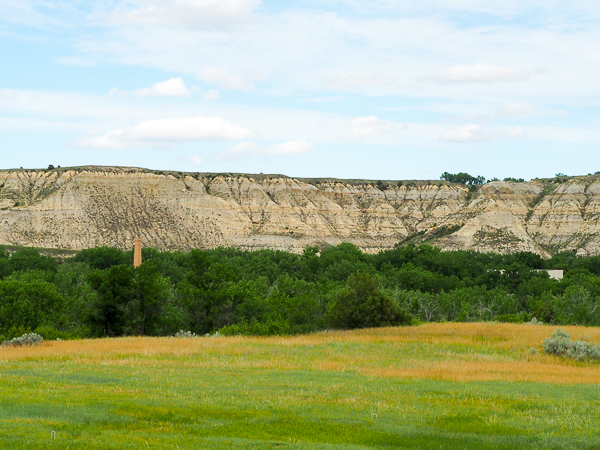
The chateau site overlooked the abattoir which the marquis hoped would make him wealthy (the chimney is all that remains), and the town site of Medora hidden in the trees.
The marquis did not endear himself with the locals by putting in barbed wire to fence his property, as well as other frontier misdemeanors, and getting in an altercation in which he killed a man. He was tried and acquitted, but eventually his luck ran out and his father-in-law cut the purse strings.
In 1886 he and the marquise left town and never came back.
Their son eventually donated the house and its contents to the state of North Dakota.

The dining room is set with the original china. This is where the family entertained guests. Since the house had eight bedrooms, there could be many.
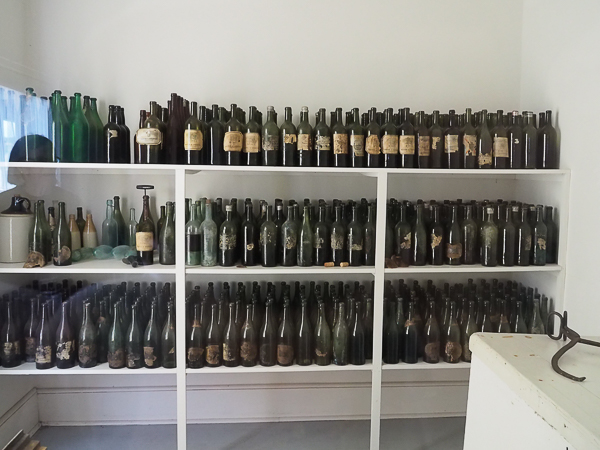
When an inventory of the contents of the house was made, the wine cellar was still intact. Most of the labels are illegible or missing, but the top row includes Medoc wines from (as best I can decode) Barton & Guestier, a company that was founded in 1725 and is still in business today.
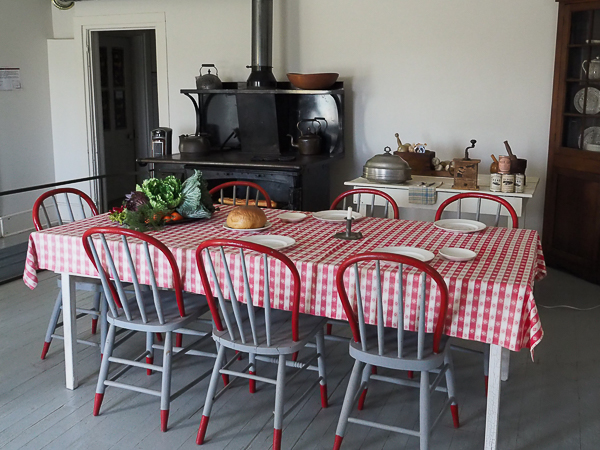
Even in the wilds of North Dakota, servants were required to run the household. The kitchen was their gathering place.
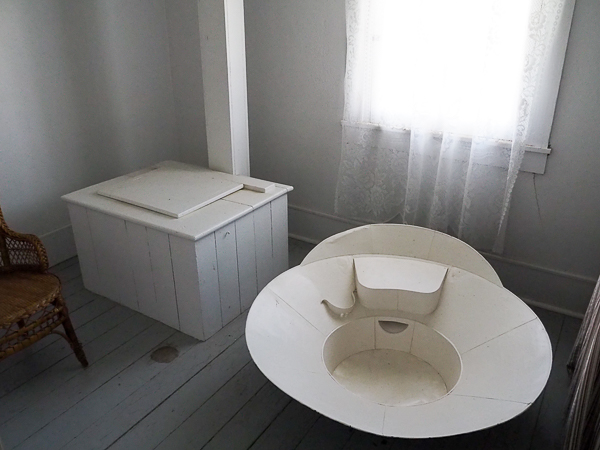
The chateau had all the modern conveniences of the day.
There were a couple of rooms with bathtubs. I asked one of the docents what they did with the bathwater after it was used. She said they just pitched it out the window.
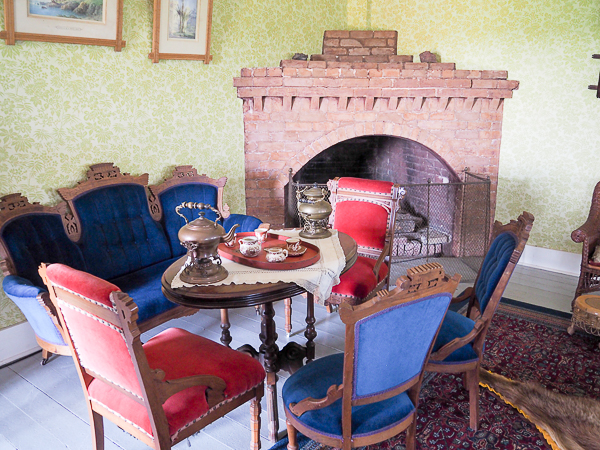
Although North Dakota may have been rough and ready, the parlor was elegantly furnished. Here the table is set for afternoon tea.
The fireplace also headed the adjacent dining room.
The chimneys extended through the upstairs bedrooms as well. There were fittings in each of the rooms where a cast iron stove could be attached to fight the cold Dakota winters.
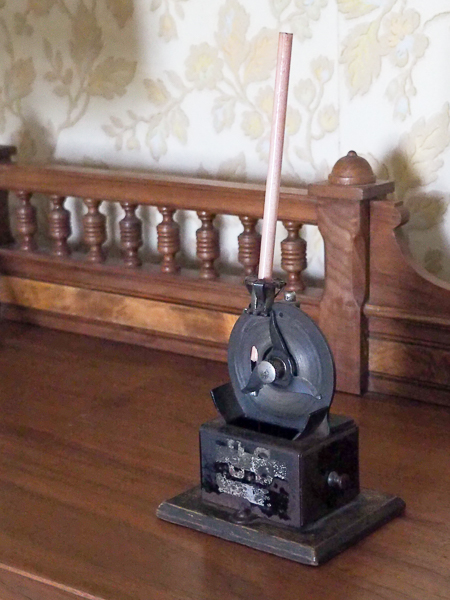
I couldn't resist this little gem. It's a pencil sharpener and post-dates the times of the family's residence. There is a video at the link showing it in operation. It even rotates the pencil so that the knives reach all sides.
The guard is missing from this one, so your fingers would be in grave danger.
I can't remember whether the Marquise or her children ever visited the house after 1886, but perhaps they did.
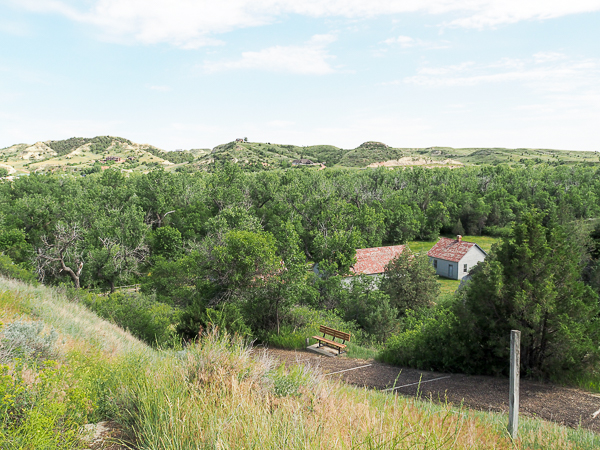
The stables were down the hill on the opposite side of the house from the town. There are still horses living here who are used in some of the interpretive events. Alas, I didn't have time to walk down to say hello.
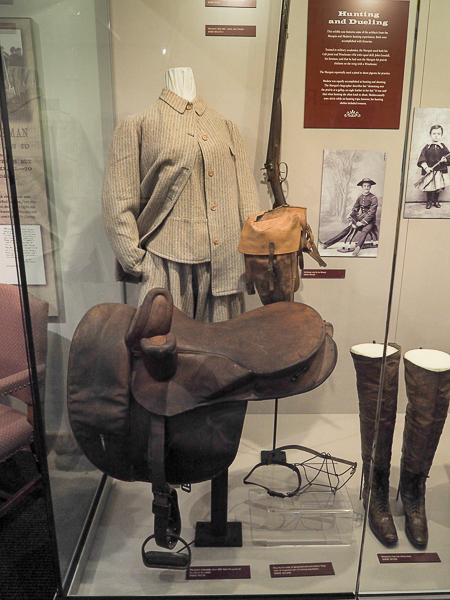
The marquise was an accomplished horsewoman and huntress. Her husband was known to say that she was a better rifle shot than he and rode better too, even if she did have to ride sidesaddle.
It's a misconception that sidesaddle riders rode in dresses -- at least into the late 19th century. Long skirts could become caught up and were dangerous if the rider or horse fell. Instead the "habit" consisted of breeches and an apron of matching color. The apron could be buttoned up for modesty's sake when not on the horse.
A properly designed sidesaddle can provide (almost) as secure a seat as an astride saddle.
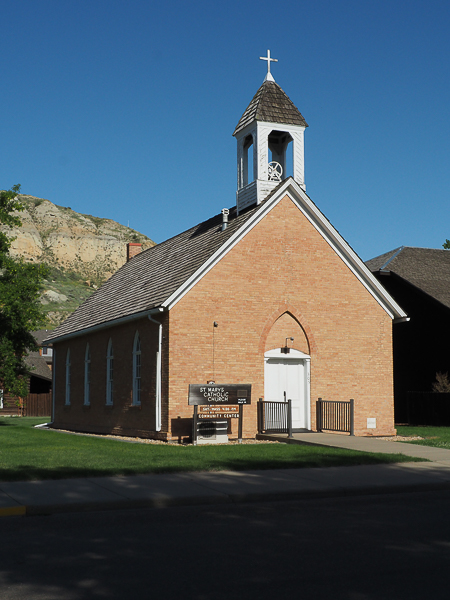
One of the marquis' "gifts" to his wife was building a Catholic church in Medora. It is an active place of worship still.
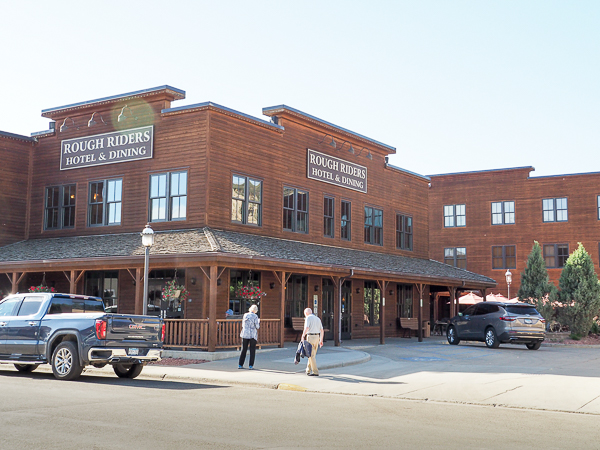
Just down the street from the church was our hotel.
The Rough Riders hotel was an early fixture in Medora even before it was renamed in 1905 in homage to Theodore Roosevelt. The current building is a reproduction.
Click your "back" button to return to the previous page or click for our picture album.